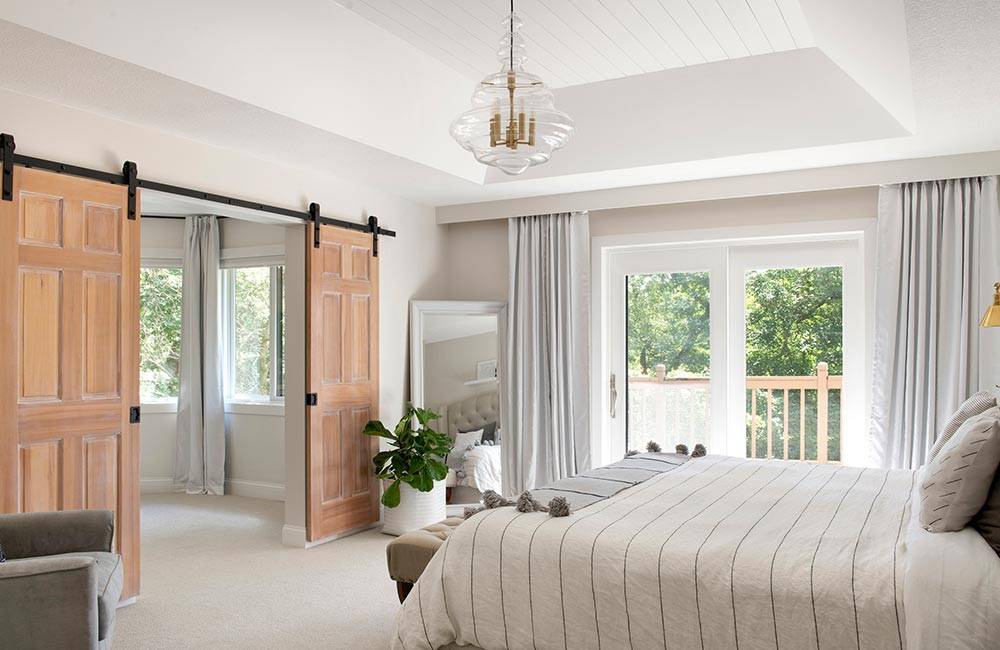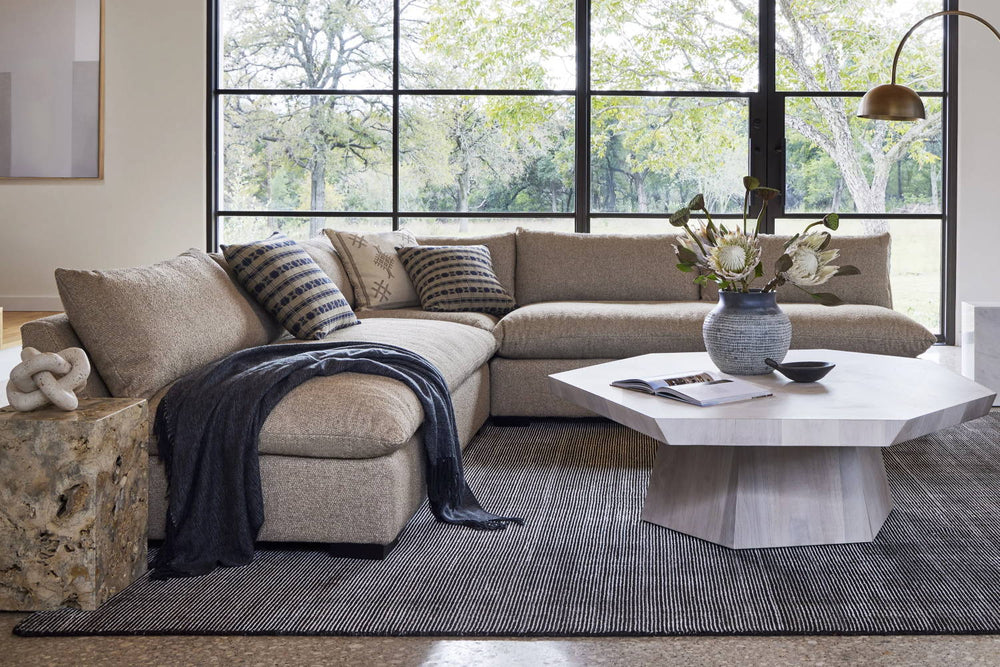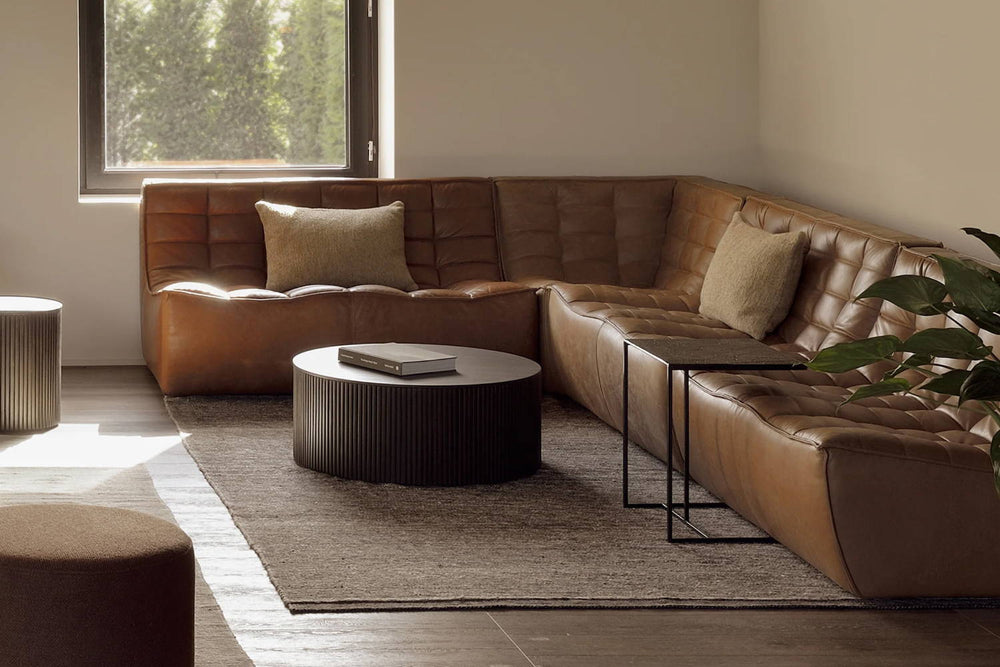Mikado Oval Coffee Table by Ethnicraft
In the realm of interior design, the question of whether to match end tables with a coffee table is a topic that frequently stirs debates. The traditional approach of perfectly coordinated furniture sets exudes a sense of order and symmetry, while the trend towards eclectic decor encourages mixing and matching for a more personalized touch. Striking the right balance between uniformity and individuality is key. This article delves into the considerations that can influence your decision. We'll explore the visual impact of both matched and mismatched choices, discuss how cohesion can be achieved through other elements in the room, and ultimately empower you to make an informed choice that aligns with your aesthetic preferences and lifestyle. Whether you're an advocate for uniformity or embrace a more diverse style, understanding the dynamics of furniture coordination will undoubtedly enhance the overall appeal of your living space.
Odeon Coffee Table by Gus
Should Coffee Tables & End Tables Match?
Whether coffee tables and end tables should match is a matter of personal preference and the overall design goals you have for your space. There are both advantages and disadvantages to matching these pieces of furniture:
Advantages of Matching:
- Coherence and Symmetry: Matching coffee tables and end tables create a sense of cohesion and symmetry in the room, giving it a polished and put-together look
- Simplifies Decision-Making: When the tables match, you don't have to spend as much time debating which styles or colors to choose, making the decorating process easier
Disadvantages of Matching:
- Lack of Variety: A fully matched set of tables can sometimes result in a lack of visual interest and personality in the room
- Predictable Design: A completely matched look might come across as safe and predictable, lacking the creative flair that mixing styles can bring
Advantages of Mismatching:
- Visual Interest: Mixing different styles, colors, or materials between coffee tables and end tables can add visual interest and depth to your space
- Unique Aesthetic: Mismatched tables can create a more unique and personalized atmosphere that reflects your individual style
Disadvantages of Mismatching:
- Potential Dissonance: If not done thoughtfully, mismatched tables could result in a cluttered or disjointed appearance
- Requires Balance: Mixing styles requires a careful balance to ensure that the different elements complement each other rather than clash
Ultimately, the decision to match or mismatch coffee tables and end tables depends on your design vision, the existing decor, and your personal taste. Some people prefer the classic and coordinated look of matched furniture, while others enjoy the creative freedom and character that comes with mixing styles. You can also strike a balance by choosing tables that share some common elements while still showcasing individuality. Whichever path you choose, remember that the goal is to create a space that feels comfortable, inviting, and reflective of your personality.
Bingham Coffee Table by Four Hands
How to Mix & Match Coffee Tables & End Tables
Mixing and matching coffee tables and end tables can be a creative and rewarding approach to interior design. Here are some tips to help you achieve a harmonious and stylish look:
Mix and match materials:
- Color Harmony: Choose a color palette that works well together. You can either opt for complementary colors or shades within the same color family to create a pleasing visual balance
- Balance Proportions: Consider the size and scale of your furniture pieces. While mixing styles is encouraged, aim for a balance in proportions to ensure that one piece doesn't overwhelm the others
- Texture and Material: Mix different textures and materials for added depth. For instance, you could pair a sleek glass coffee table with wooden end tables to create an interesting contrast
Vary the shapes of the different pieces of furniture:
- Style Fusion: Blend different design styles to create a unique look. Combining modern and rustic elements, for example, can result in a charming and eclectic ambiance
- Focal Point: Choose one piece as the focal point and let the others complement it. This helps maintain a sense of order amidst the mix of styles
- Layering Shapes: Experiment with various shapes to create visual intrigue. Round coffee tables can be paired with square or rectangular end tables for a dynamic effect
Consider the balance of visual weight:
- Height Harmony: Aim for a harmonious flow by aligning the heights of your tables. This creates a balanced visual line throughout the room
- Unifying Accessories: Use decor accessories like lamps, vases, or trays to tie the tables together. These elements can bridge the gap between different styles
- Confident Contrast: Embrace contrast in a deliberate way. Boldly combining different styles can result in a stunning and unexpected visual impact
Remember, there's no right or wrong way to mix and match coffee tables and end tables. The key is to maintain a sense of balance and harmony while allowing your creativity to flourish. Trust your instincts, and enjoy the process of crafting a space that reflects your individuality.
Paden Dining Table by Four Hands
Should My Coffee Table Match My Dining Table?
Matching your coffee table with your dining table is not a necessity, and whether you choose to do so depends on your design preferences and the overall style you want to achieve in your living and dining areas. In the end, the decision to match or mix your coffee table with your dining table depends on your personal taste and design goals. If you prefer a cohesive and coordinated look, matching could be a good choice. On the other hand, if you value creativity, uniqueness, and a more eclectic atmosphere, mixing tables might be more appealing.
Evelyn Round Nesting Coffee Table by Four Hands
In the world of interior design, there's no one-size-fits-all answer to the question of whether your end tables need to match your coffee table. As we've explored the nuances of this decision, it's clear that both matching and mismatching have their merits. Matching tables create a sense of cohesiveness and a visually balanced space, while mixing styles can add character and depth to your decor. Ultimately, the choice should reflect your personal style and the ambiance you want to create in your living space. Whether you choose uniformity or diversity, remember that achieving a harmonious room extends beyond just the tables themselves. Factors like color schemes, textures, and overall layout play vital roles in crafting an appealing atmosphere. So, as you make your decision, consider the broader context, your individual taste, and the story you want your living space to tell. In the end, the beauty of design lies in its ability to be a reflection of you, making your home a truly unique and inviting haven.








